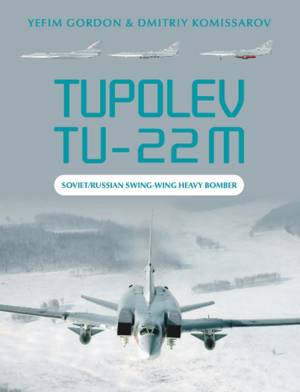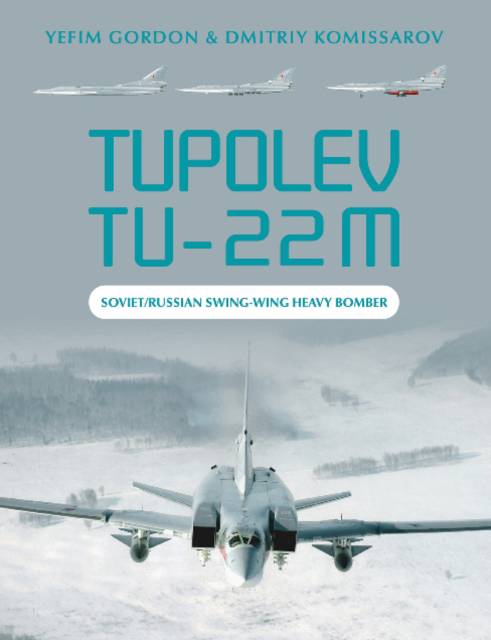
- Afhalen na 1 uur in een winkel met voorraad
- Gratis thuislevering in België vanaf € 30
- Ruim aanbod met 7 miljoen producten
- Afhalen na 1 uur in een winkel met voorraad
- Gratis thuislevering in België vanaf € 30
- Ruim aanbod met 7 miljoen producten
Zoeken
Tupolev Tu-22m
Soviet/Russian Swing-Wing Heavy Bomber
Yefim Gordon, Dmitriy Komissarov
Hardcover | Engels
€ 81,45
+ 162 punten
Omschrijving
In the late 1960s, the patriarch of Soviet aircraft design, Andrey Tupolev, offered the Soviet air force a supersonic bomber to replace the 1950s-vintage Tu-22 Blinder with a less capable--but cheaper--alternative to the Sukhoi design bureau's proposed T-4 strategic bomber. Tupolev did not offer it as an "all-new" aircraft but, instead, passed it off as a "massive upgrade" of the Blinder. Thus was born the Tu-22M, Tupolev's first aircraft with variable swept wings and the ability to carry both bombs and supersonic cruise missiles. In the West, the new bomber became known as the Backfire.
- First flown in 1969, the aircraft entered production in 1972.
- The most widespread version was the Tu-22M3, which soldiers on today with the Russian air force.
- The Backfire has had an active career both in Cold War operations and in "hot" wars, from Afghanistan to Syria, where it has participated in the global war on terrorism.
- This book describes the Tu-22M's development, including the latest upgrades, and its Soviet and post-Soviet operations.
- Fleet lists are included, as is a detailed design description, and a wealth of color profiles and line drawings.
Yefim Gordon is an aviation journalist and photographer who has been researching Soviet/Russian aviation history for more than 40 years and has authored and coauthored more than 130 books on the subject. Dmitriy Komissarov has translated or authored/coauthored more than 80 books on Soviet/Russian aircraft and written numerous features for Russian and foreign aviation magazines.
Specificaties
Betrokkenen
- Auteur(s):
- Uitgeverij:
Inhoud
- Aantal bladzijden:
- 336
- Taal:
- Engels
Eigenschappen
- Productcode (EAN):
- 9780764363542
- Verschijningsdatum:
- 30/08/2022
- Uitvoering:
- Hardcover
- Formaat:
- Genaaid
- Afmetingen:
- 218 mm x 282 mm
- Gewicht:
- 1905 g

Alleen bij Standaard Boekhandel
+ 162 punten op je klantenkaart van Standaard Boekhandel
Beoordelingen
We publiceren alleen reviews die voldoen aan de voorwaarden voor reviews. Bekijk onze voorwaarden voor reviews.











